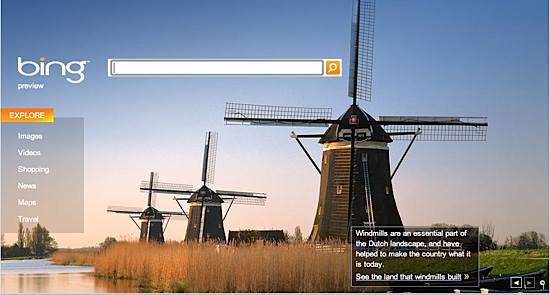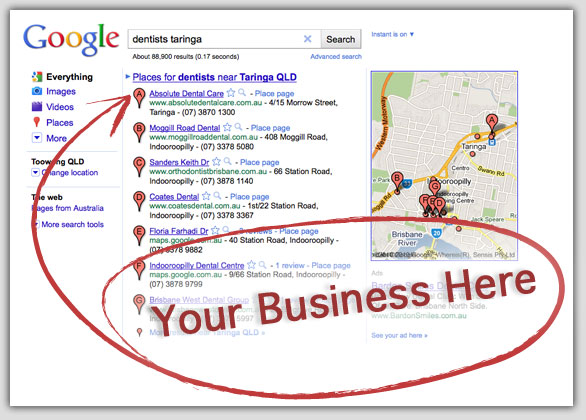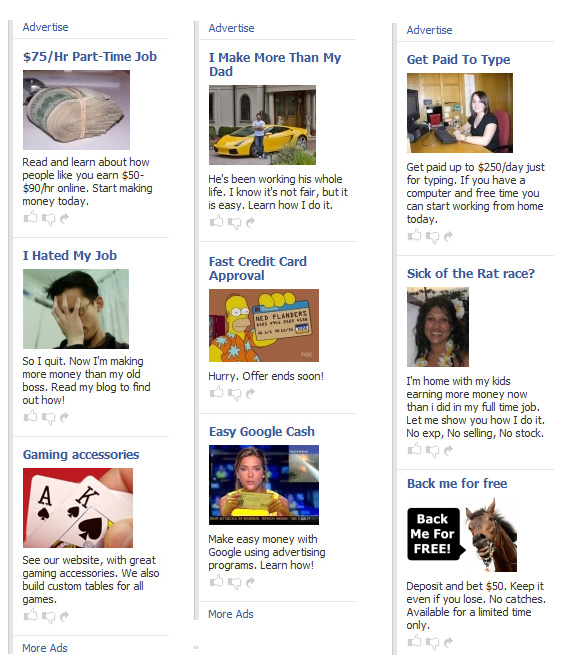If you are an affiliate or marketer, this is the one FTC article you must read on how FTC Rules are Affecting the Industry.
Excerpt: The FTC clearly considers everyone in the stream liable for claims that they knew or should have known to be false and unsubstantiated. This includes networks. The lack of any meaningful interaction between advertisers and publishers is fraught with peril. As the industry evolves, publishers and networks must work more closely with advertisers to ensure that all those people in the advertising stream possess adequate substantiation prior to making any product claims.
Given the flurry of recent state and federal regulatory activity in the affiliate marketing space, and in terms of what has been taking place pertaining to compliance, liability mitigation strategies should be, and are, front-and-center. The FTC Act prohibits unfair or deceptive acts or practices, in or affecting commerce. Regulatory agencies generally select cases that have a certain degree of consumer harm. It could be a significant amount of harm to a very small number, or an insignificant amount of harm to many consumers.
The most recent cases seem to be grouped amongst affiliate marketers allegedly doing the same type of thing – fake news articles about weight loss supplements. The ones charged were undoubtedly a small fraction of who was actually involved. The FTC, most likely, picked the largest group of consumer complaints stating that they believed the testimonials and advertisements were real and that the representations materially affected their ultimate purchasing decision.
Affiliate marketers are being quite aggressive and publishing non-compliant content to maximize conversions. State and federal regulatory authorities are becoming increasingly more vigilant with regard to non-sellers in the advertising stream.
A common allegation in the most recent sweep is that affiliate marketers published content which included false and unsubstantiated claims, including that supplements would cause rapid weight loss. Another allegation is that the published content was deceptive because it gave the impression of being an objective new report, when it was not, and set forth test results demonstrating the effectiveness of a product, when there were no such tests. Also, the comments following the alleged new articles did not reflect the views of actual independent consumers. In many instances, the testimonials were completely fabricated. Many affiliates also failed to adequately disclose their financial relationship with the advertisers. The FTC endorsement guidelines clearly state that that any advertisement that conveys that what is stated is the opinion or experience of anybody other than the advertiser, without also disclosing the existence of a material relationship or compensation, constitutes an unfair and deceptive practice.
The message is quite clear. No disclaimer will remedy the problems with false news websites and testimonial blogs. Networks and publishers are not immune from liability for false and deceptive marketing materials. Naturally, publishers should be concerned about creative they are provided. If they simply run with what they are provided by an advertiser, without more, publishers face liability for any false and unsubstantiated product claims. It is no defense for publishers to state that they merely utilized what an advertiser signed-off on. Prior to making any claims, verification and substantiation from the advertiser are required. Everyone in the marketing stream that makes a claim regarding a product is responsible to obtain it. Increasingly, publishers are being held to the same standard as the advertiser.
The FTC clearly considers everyone in the stream liable for claims that they knew or should have known to be false and unsubstantiated. This includes networks. The lack of any meaningful interaction between advertisers and publishers is fraught with peril. As the industry evolves, publishers and networks must work more closely with advertisers to ensure that all those people in the advertising stream possess adequate substantiation prior to making any product claims.
You do not have to be an Internet marketing and advertising law attorney to realize that content must be true. Fictitious news entities, new entities that have not, in reality, endorsed a product or service, and misleading photographs that do not depict bona fide individuals all constitute unfair and deceptive marketing practices.
In addition to state-based advertising statues and regulations, federal regulations must be complied with. It is imperative that landing pages conform to the Commission’s requirements regarding advertising claims and related disclosures, even more so if the vertical has been historically subject to regulatory scrutiny. Claims must be factual, reasonably substantiated, and inherently truthful. Doing otherwise runs the risk of a regulatory enforcement action by the FTC or state Attorney General.
Obviously, advertising methods within the affiliate marketing community need to be changed. Advertisers and networks merely directing publishers to place “Advertorial” at the top of a landing page with fine print stating that “this is not an actual news publication” does not come close to remedying an overall deceptive impression. In reality, a fully compliant landing page is susceptible to a publisher making non-compliant modifications to generate higher conversion rates.
The starting point in a regulatory compliance analysis if to assess the “overall net impression” of what is being portrayed, in context, from the viewpoint of the objective and reasonable consumer. The FTC analyzes landing pages objectively, as a whole. In other words, the words, content, claims, reports, studies, photographs, placement and use of disclosures, testimonials, user-generated content, copyright or trademark infringement issues, the terms of use, and the privacy policy are all consider together. Reports by third-parties and testimonials must reflect the honest opinions, findings, beliefs, or experiences of the endorser. An experienced FTC and state attorneys general regulatory defense lawyer will ensure that appropriate testimonial affidavits, and requisite substantiation that supports all statements, have been obtained.
The general rule with regard to disclosures and disclaimers is that they must be stated “clearly & conspicuously.” Those in the performance marketing industry are surely aware of the inversely proportional relationship between providing clear & conspicuous disclosures and disclaimers, and maximizing conversions. The reality is that if a representation contained in an advertisement tends to materially influence a consumer’s decision, all conditions, restrictions, and limitations must be disclosed clearly & conspicuously in order to prevent the advertisement from being considered deceptive.
The FTC leaves the precise meaning of “clear & conspicuous” ambiguous, perhaps intentionally. The Commission looks at proximity, presentation, prominence, and placement. Disclosures and disclaimers must be reasonably noticeable and understandable, and reasonably adjacent to whatever representation they are limiting or modifying. Asterisks are all too popular and are inherently problematic because they tend to be at the top and direct a consumer’s attention down to the bottom, to limiting language that is all too often in extremely small font and grayed out. Perhaps even more problematic is the use of hyperlinks for disclosures and disclaimers. The link must be obvious. Prominently displayed text that clearly and appropriately alerts consumers as to the importance, relevance, and nature of the hyperlink is also must. Consumers should be taken directly to the disclosure on the click-through page.
There is no magic language, template, or one-size-fits-all pre-set formula when it comes to compliant content editing and creative design. Rather, experienced lawyering that develops and implements compliant language and creative design into the marketing materials, while not negatively impacting conversions, is an art.
The most obvious place to start is by tightening-up contacts. Advertisers, networks, and publishers all have contracts with indemnity provisions. Risk minimization and liability mitigation for non-compliant marketing materials absolutely must be a component of every contract negotiation between the source and the user of the creative. True as that may be, the Federal Trade Commission will casually disregard those contracts and how they apportion liability. If the Commission believes that an individual or corporate entity is liable, it will investigate and prosecute regardless of what any contract between those in the stream of advertising says.
Another way to minimize risk is to create separate legal entities to shoulder different risks. Seek consultation from your legal counsel about corporate formation and ownership issues. As separate entities, personal liability exposure is limited if one of the prongs comes under investigation. The risk of having the entire structure shut down if only one of the prongs is attacked is also minimized. Ownership of the entities should be separate and distinct, and corporate governance must be conducted properly. That said, if the Commission believes they have located egregiously deceptive practices, they will almost always try to name the corporate entity itself as well as the principals who have ultimate authority, control, and directly participate in the day-to-day decisions.
Inquiries often surround whether the FTC can or will pursue matters internationally, and whether a United States-based affiliate can limit liability by running offers outside of the U.S. When harm spread overseas, it does not necessarily impact the FTC’s analysis of whether to pursue a case. The Commission has broad authority to investigate deceptive acts and practices involving foreign commerce, so long as that commerce has a reasonable nexus with the U.S. For example, practices causing, or likely to cause, foreseeable injury within the United States, or mere conduct that occurs within the U.S.
While somewhat unlikely, a publisher residing in the United States that is causing sales and running traffic solely in Europe is certainly something the FTC can pursue, and should not be ruled out as a concern. Neither should the FTC pursuing those outside of the United States, as we have seen recently. The most egregious violations will not stop the FTC from going after those outside of the U.S. The countries currently most likely to cooperate with an FTC investigation are the United Kingdom, Canada, Australia, and perhaps New Zealand.
Incorporating offshore is not necessarily less of a risk. Many believe that state and federal regulatory agencies prefer to pursue domestic low-hanging fruit. However, should the Commission start digging and find an offshore entity, an attempt to evade liability and/or hide assets will almost certainly be implied and utilized as additional grounds to pursue a matter.
In the end, designing and implementing business practices in alignment with the current legal and regulatory framework is a necessary commitment and will go a very long way toward good faith compliance. A thorough legal review from an experienced Internet attorney is essential to avoid legal entanglements with federal or state regulatory authorities.
Information conveyed in this interview/article is provided for information purposes only and does not constitute, nor should it be relied upon as legal advice. This information is not intended to substitute for obtaining legal advice from an attorney. No person should act or rely on any information in this article without seeking the advice of an attorney.















 What was your first “really successful” affiliate marketing campaign?
What was your first “really successful” affiliate marketing campaign?

 But wait, where is the middle ground?
But wait, where is the middle ground?





